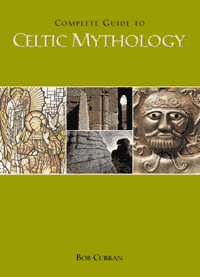
IN SEARCH OF ANCIENT IRISH HEROES - part 3 of 5
The preponderance of magical weapons and personalised talismans does not detract from the fighting skill of the warrior and there are indications that the Celts worked hard to develop battle techniques among their young men. From earliest times, the most formidable warrior or most successful hunter must have enjoyed a special status within his community. The nature of that status, however, is unclear. The warrior/ hunter might have been individually praised for his skill, or he might have been regarded as a channel for the tribal deity who gave him those powers. This gave him an almost god-like status in the eyes of his contemporaries and it is possible that he might have been worshipped either as a god himself or as the physical embodiment of one. The concept of the ‘hero’, as we understand the term, did not appear until medieval times, with the rise of romantic literature. The great and well-known stories concerning the heroes or heroic warriors of old were not written until the 12th and 13th centuries, at the earliest, when they were committed to paper by learned scribes and monks. Yet, even those acknowledged the ‘god-connections’ of heroes by making them either the children of gods or the offspring of a mortal and Otherworld entity. Later writers were to embellish the basic legends even further by creating more Otherworld connections or by providing the hero with an enchanted weapon or sending him on a mystical quest. These stories belong to a post-Celtic age but, ironically, have come to embody the heroic Celtic ethos.
Ritually Damaged Weapons
Before meeting the ancient heroes of the Celtic world, we must consider the occurrence of ritual damage – particularly of weaponry. Such damage was not confined to armaments of war; ritually broken pots and jars have been unearthed at a number of sites, such as Flag Fen in Cambridgeshire. The act of breaking, bending or cracking an object was its symbolic death, severing its connections with the real, physical world before it could be offered it to the gods or forces of the Otherworld. It might also have symbolised the returning of weapons to the entities that had given them to human warriors. A common way of offering ritually broken swords, spears or axes was to deposit them in a river or lake. At the Flag Fen site, 300–400 bent or otherwise damaged swords, daggers and other items of martial equipment have been found.
From this evidence, historians have argued that the ritual desecration of weapons was probably widespread in the late Neolithic period and continued well into the early Iron Age. The practice of dumping broken weapons into lakes was common in the majority of Celtic lands but seems to have been particularly prevalent in Cornwall and Wales. Large deposits of ritually smashed weapons have been found in the lake of Llyn Cerrig Bach on the island of Anglesey, famed as a centre of ritualised worship. This legend-motif appears in the story of King Arthur's death when the magic sword Excalibur is returned to the waters when Arthur no longer needs it.
Ritualised damage was also carried out at a number of pre-Roman shrines. Broken and deliberately bent swords have been found at sanctuaries in Oise, France, and at Harlow, England (see Shrines and Sacred Sites). The practice was not as common in the Roman period, it seems; perhaps because the adopted Roman gods did not condone that form of worship or perhaps the need to ‘pacify’ weaponry was not so strong. It may also mean that the belief in magical armaments was already dying but the notion of the individual hero, personally skilled in combat, was already taking shape.
This Chapter extract continues with In Search of Ancient Irish Heroes - Part 4>>>.
From Complete Guide to Celtic Mythology by Bob Curran

|
|





